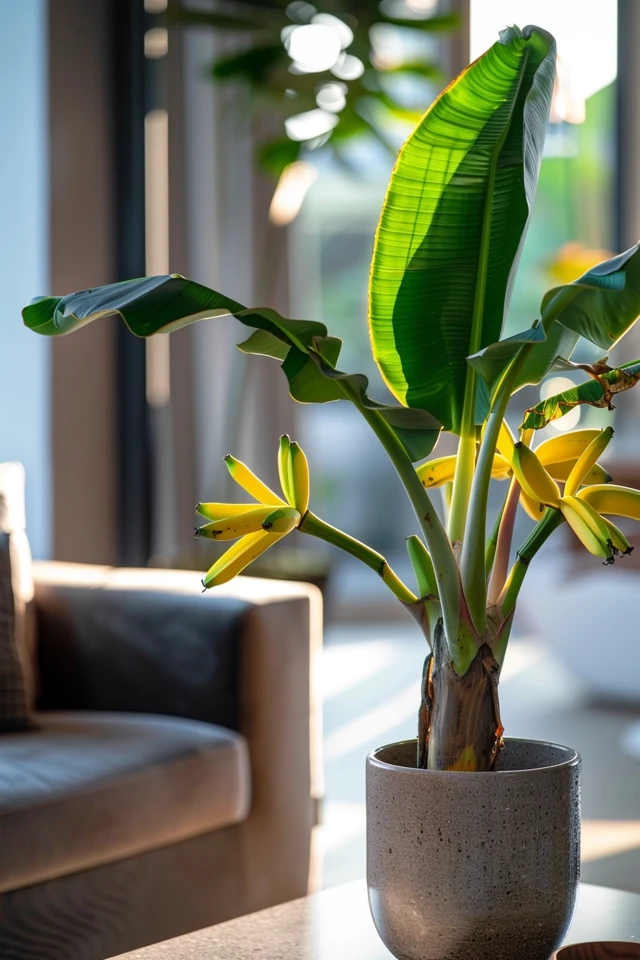When it comes to identifying the type of banana tree you have, it can be a challenging task. However, with careful observation and knowledge of certain characteristics, it is possible to differentiate one species from another.
One way to start is by examining the shape of the leaves. Some varieties, like Musa acuminata, have long narrow leaves, while others, like Musa Balbisiana, typically have broad and fan-shaped foliage.
Another factor to consider is the presence of bristles on the underside or surface of the leaf. Most vigorous banana varieties do not have bristles, while others may have a slightly rough texture due to the presence of simple hairs or trichomes.
Additionally, the density of the fruit clusters can also vary among different types of banana trees. Some genera produce much denser clusters than others.
Lastly, observing the changes that the plants undergo during ripening can also help in determining the type of banana tree. Some fruits develop an intensely sweet flavor after turning bright yellow, while others, like Plantains, remain firm even when fully ripe.
By considering these factors, you can successfully identify the type of banana tree you have in your garden.
Key Takeaways:
- Examining the shape of leaves can help identify different banana tree species.
- Presence or absence of bristles on the leaves can be a distinguishing characteristic.
- Density of fruit clusters can vary among different types of banana trees.
- Observing the changes during ripening can provide valuable clues about the type of banana tree.
- Understanding these characteristics will help in providing targeted care for your banana tree.

Different Types of Banana Trees
When it comes to banana trees, there is a wide variety of types and species to choose from. Understanding the different types of banana trees and their unique characteristics is essential for selecting the right variety for your specific needs and climate.
There are two major types of banana trees: Cavendish bananas and Plantains. Cavendish bananas, which are commonly found in supermarkets, originated from the East India and Southeast Asia region. These bananas have a sturdy nature, making them able to withstand colder temperatures compared to other varieties.
On the other hand, Plantains have their origins in West Africa, Central and South America, and the Caribbean Islands. They are known for their firm texture and starchy, sweet taste when cooked. Plantains are often used in savory dishes and can be fried, boiled, or baked.
Within these two major types, there is a wide range of banana tree varieties, each offering its own flavor profile, growth requirements, and uses. Some popular banana tree varieties include:
- Dwarf Cavendish
- Musa Basjoo
- Pisang Raja
- Blood Plums
These varieties differ in taste, size, and appearance, allowing you to choose the perfect banana tree for your preferences and garden. Whether you’re looking for a sweet dessert banana or a cooking banana, there is a type of banana tree suited to your needs.
Recognizing banana species and understanding their unique characteristics is the key to successfully cultivating and enjoying these tropical delights. By exploring the different types of banana trees, you can embark on a flavorful journey and create an oasis of tropical goodness in your backyard.

Conclusion
In conclusion, understanding the importance of banana tree identification is crucial for successful care and cultivation. By carefully observing the shape of the leaves, the presence of bristles, the density of fruit clusters, and the changes during ripening, you can accurately determine the species of your banana tree.
Once you have identified your banana tree, you can gain valuable insights into its specific characteristics, such as its growth requirements and flavor profiles. This knowledge will enable you to provide the optimal care and create the ideal environment for your tree to thrive.
Whether you have a sturdy Cavendish variety or a flavorful Plantain, each type of banana tree offers its own unique benefits and advantages. By acquiring the right information and knowledge on banana tree characteristics, you can successfully identify, cultivate, and enjoy the perfect banana tree in your garden.


